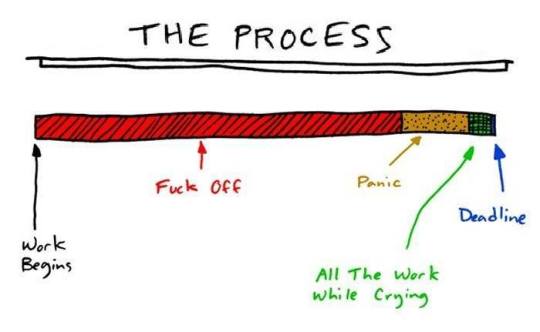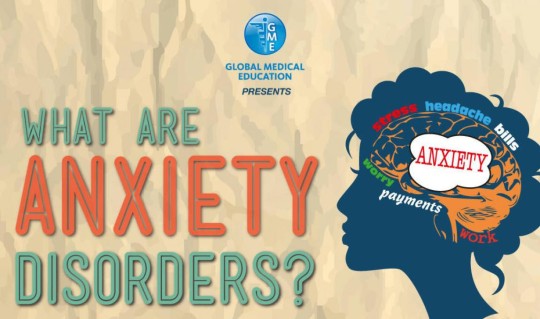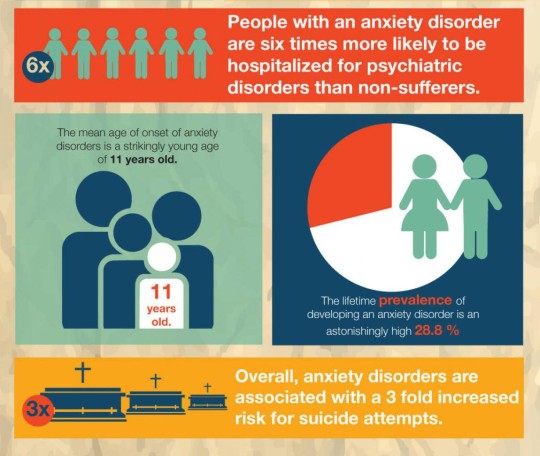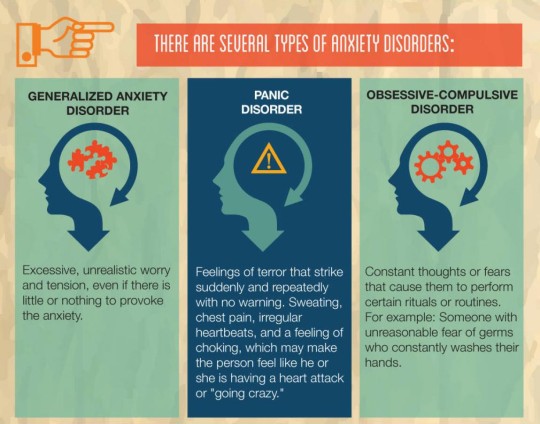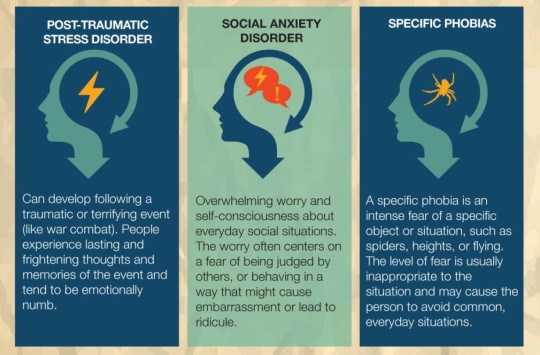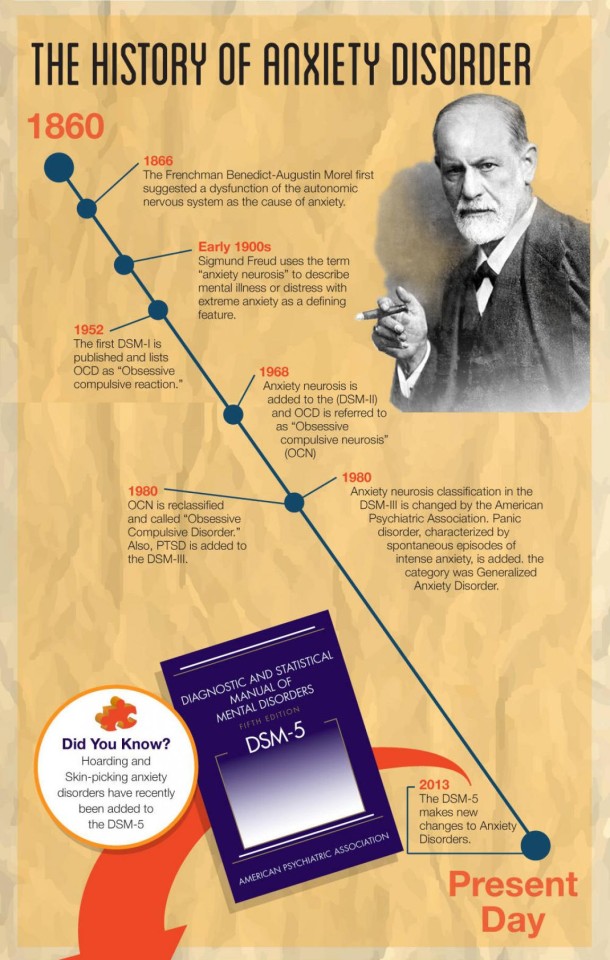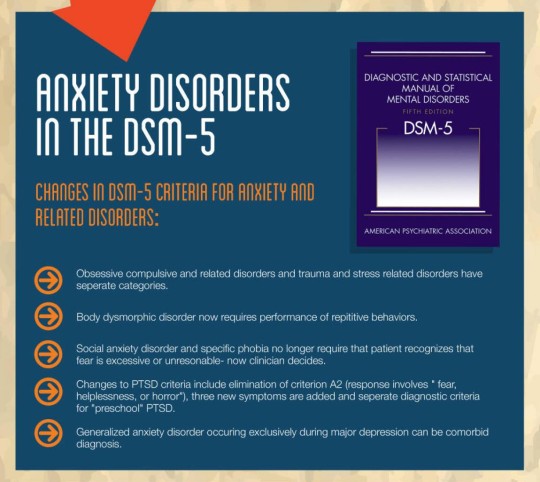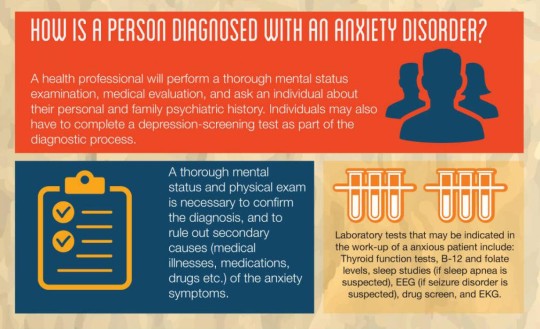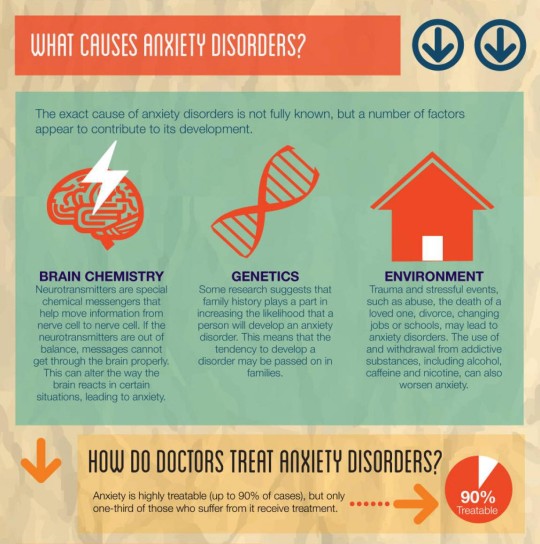Quote
The Plus Side of Distraction
Devoted to Distraction
In one of those scientific switchbacks, daydreaming now appears to be a vital function of the psyche—a cauldron of creativity and an arena for rehearsing social skills. It may even be the backbone of our consciousness. Maybe what we all need is more time to let our minds meander.
By Josie Glausiusz, published on March 01, 2009 - last reviewed on April 11, 2014
1
inShare
Zoning out, spacing out, out-to-Iunch, wool-gathering, building castles in the air. How many pejorative terms do we need to get the idea that daydreaming is an activity we don't think too highly of? And how many schoolkids have been reprimanded or teased for letting their minds meander when a teacher wanted them to focus on Something Important?
Yet, says neurologist Marcus Raichle of Washington University in St. Louis, "Everybody does it, they know they do it, and it's easy for people to relate to." In fact, psychologists and neuroscientists estimate that we spend between 15 and 50 percent of our waking hours daydreaming—that is, straying away from focused tasks or external stimuli to inner thoughts, fantasies, and feelings. And when our brain has nothing else in particular to do, it turns on and kicks into high intensity a whole neural network dedicated to reviewing what we already know and imagining possible worlds—in other words, daydreaming.
Until recently, however, daydreaming was considered not merely a waste of time but almost pathological: Old psychology textbooks warn that excessive daydreaming can propel one into insanity, and during the First World War, a United States army questionnaire included the statement "I daydream frequently" to screen out neurotic recruits. Even today, we're so down on distractibility, especially in the classroom, that we medicate kids who are prone to it.
Throughout the 20th century, "Only a handful of people were investigating daydreaming;' says psychologist Jonathan Schooler of the University of California, Santa Barbara. "It was largely overlooked by mainstream psychology."
Yet today, there is a whole new scientific interest in mind wandering. It was kicked off barely a decade ago when Raichle discovered that several brain structures were unusually metabolically active when the brain was thought to be idling. Raichle has mapped the regions that allow us to meander inside our own minds; chief among them is the autobiographical-memory-making hippocampus, the posterior cingulate (involved in emotion, memory, and in responding to sensory stimuli) and the medial prefrontal cortex, which evaluates info from our bodies and the world around us from a self-centered perspective. What's more, RaichIe's findings show that daydreaming is the mind's default mode.
Far from being a worthless distraction, daydreaming seems to be an essential human activity. It's the spontaneous thoughts we have while doing it that make us feel vibrant, aware, and engaged. Daydreams help generate our sense of self, and may even be a key to consciousness.
Daydreaming also helps to hone our social skills: Long before computers, daydreams served as earth's first virtual world, where we could rehearse social situations, love affairs, comments to the boss, adventures, emergencies, and conflicts without risk or consequence. What's more, new research shows that daydreaming can be an important font of creativity, particularly for those who pay attention to their daydreams.
In the revisionist view, daydreaming, far from being a total time-waster, is a potential portal to the Nobel Prize—as it was for Albert Einstein, whose visionary daydreams helped him conceive the theory of relativity while he toiled away at a humdrum job in the Swiss patent office.
Practice, Practice, Practice
In the 1960s, long before it was fashionable to do so, psychologist Jerome Singer set out to investigate daydreaming: Who does it, how often they do it, and what they daydream about. Now 84 and an emeritus professor of psychology at Yale, Singer is modest about his original goals. "I was always interested in thoughts and thinking," he recalls. Singer had an active inner life as a child, and his friends called him "Tarzan" because of the fantastical stories he would invent about his hero.
As a researcher, Singer wanted to know how daydreams vary among different groups of people—women and men; children, adolescents, and adults; married people and single people; as well as different ethnic groups. He distributed questionnaires and compiled the results in his 1966 book, The Inner World of Daydreaming.
Significantly, Singer discovered that exotic visions a la Walter Mitty—James Thurber's fictional fantasist, who spins imaginary tales of his own heroism—are actually quite rare. Most people's daydreams, in fact, deal with the immediate concerns of everyday life: mundane planning for the future or "dealing with other people in significant relationships." A woman diapering her baby, for example, "may find herself drifting off into thoughts of what to cook for supper, or how to convince her husband they need a washing machine," Singer found, rather than into "fantasies of dancing the merengue with a handsome tanned stranger amid the moonlit palms of a West Indies resort."
Despite the dated descriptions, Singer was still a few decades ahead of his time. Researchers now know that daydream content pretty much maps onto people's everyday goals, aspirations, and apprehensions, which vary greatly from one person to the next.
For the average person, daydreaming typically represents a kind of mental rehearsal, maintaining the brain in a state of readiness to respond. Singer cites successful athletes—O.J. Simpson among them—imagining before each game a wide range of situations that could arise and plotting their responses. Such preparation may mirror what goes on in night dreams, which can also serve as rehearsal for real-life situations. "We do know that, in general, people who daydream a lot are also more aware of and likely to remember their night dreams," Singer says. "There seems to be a continuity between daydreaming and night-dreaming."
With night-dreaming, however, "you've shut down your whole system of processing external material, which means that you're more likely to be thinking about things from your past or from possible future situations in your life, and playing around with those mentally because you're not getting any competition from the outside world." By contrast, our waking wool-gathering is more tightly tethered to current reality.
A key advantage of daydreaming, Singer explains, is one Freud pointed out many years ago: "You can engage in trial action without any consequences. You can imagine yourself ridiculing your teachers or beating up your boss without actually doing it." Such fantasies may fulfill a psychic need. By playing out the scenarios mentally, we may diffuse our anger and arrive at more reasonable strategies for dealing with bad situations. On the other hand, aggressive ruminations can also feed real acts of violence: People who obsessively fantasize about an instant, violent solution to a problem and see no other option will sometimes carry it out.
Privatizing Make-Believe
Living in a waking virtual world, or "watching your own mental videos;' as Singer puts it, begins early. The daydreaming network first becomes active around age two, when children engage in make-believe play—the precursor of adult daydreaming. "Pre-school children talk out loud most of their thoughts," Singer reports. "As they get towards school age, they have to shut up, and that's when they begin the private daydreaming that characterizes human beings for the rest of their lives."
It's quite common for creative people—writers, for example—to have conjured imaginary friends or fantasy worlds as children, the most famous example being the Bronte sisters, who created the make-believe worlds of Gondal and Angria while living in their parsonage on the Yorkshire moors. Daydreams are most vivid in adolescence, when they are often sexual in nature.
Content for adults can be "all over the map," UC Santa Barbara's Schooler adds, and some people confess to thinking about nothing at all. Naturally, most daydreams are self-related. But not all daydreams are pleasant: Some are guilt- or anxiety-ridden, and even the negative rumination that characterizes depression is a form of daydreaming.
In one major attempt to understand what people daydream about, psychologist Eric Klinger of the University of Minnesota equipped dozens of subjects with beepers and asked them to write down their daydreams every time they heard a beep. From such thought-sampling he found that about 40 percent of daydreams "relate to some kind of interpersonal theme!"
Klinger also discovered that some people daydream far more than others, with subjects reporting anywhere from 6 to 176 daydreams per day. Some people prove particularly "high-wattage" daydreamers—experiencing more intense daydreams than their fellows' feeble fancies. Singer notes that soldiers and others who have survived traumatic situations tend to relive their experiences in daydreams, often accompanied by vivid flashbacks.
Still, it is understandably hard to pin down precisely what's coursing through the daydreaming mind, and how often. The reason is simple: Daydreaming is a stream of consciousness, in which we tend to flit from one topic to another, floating between the past, present, and future, and between external and internal worlds. It's precisely because of that randomness that daydreamers can experience the new and surprising thought connections that lead to creativity.
Your Own Discovery Channel
"By allowing your mind the freedom to roam, the chances that you're going to have an insight are much higher. It's likely that you are going to recombine pieces of information in a novel way," says cognitive psychologist Malia Fox Mason of Columbia University.
Schooler has himself compiled a list of creative flashes that have generated inventive solutions to major problems or paved new cultural paths. First and foremost is Albert Einstein, who imagined himself running alongside a light wave, a fantasy that ultimately led to his theory of special relativity. Kary Mullis, who discovered the polymerase chain reaction—a now-indispensable method of replicating DNA—conceived the idea while daydreaming on a drive between San Francisco and his cabin in the Mendocino woods.
"The mind is inherently restless," says Schooler. "It's always looking to attend to the most interesting thing in its environment. Oftentimes, the most interesting thing is going on in the internal environment."
Spacing out can have its downside, of course—seriously impeding concentration on important tasks. In one study, Schooler asked 45 students to read a text, and found that on average they "zoned out" about 5 times in 45 minutes. In two-thirds of the episodes, participants were unaware that they had ambled off to lala-land; they continued to scan each line even though the text had turned to gibberish.
A Time to Reap
Those who pay attention to their daydreams, however, are especially likely to harvest creative insights from their reveries, Schooler has discovered. He points to Jerry Swartz, the inventor ofthe first hand-held barcode laser scanner, WiFi, and the first commercial wearable computer. Swartz always carries index cards so that if an idea occurs to him while daydreaming he can write it down before he forgets it—a habit worth imitating. "If a great idea pops into your mind and you didn't notice it, what good is it?" Schooler asks. "You need to daydream, but you also need to take stock of the content of your daydreams; otherwise you could have a creative thought and never notice it."
In a recent, still-unpublished study, Schooler and his colleagues asked 122 students to read a children's story on a computer screen. Each time they caught their mind wandering, they pressed the M key. He also interrupted subjects at random to ask if they had tuned out (daydreaming, and aware of it), zoned out (daydreaming, but unaware of it), or were on task. Those who were more likely to notice each time their attention drifted scored higher on a test of creativity: When asked to name all the possible uses for an everyday object such as a hanger or a toothpick, they came up with longer and more unusual lists. Hangers could be picture frames or boomerangs, backscratchers or fishing tools. Toothpicks could be antismoking aids, minipopsicle sticks, or art tools.
If creative insights are the products of daydreaming, could it be that they are the purpose of daydreaming? In that case, the seemingly aimless meanderings of our minds would, in fact, be goal-directed. Schooler agrees, but with a caveat: "It's important to distinguish between the goals of the moment and more long-term goals," he explains. "Daydreaming is typically not in the service of the goals of the moment; in fact it works against the goals of the moment. But at the same time, it likely is driven by more distant goals."
A Means of Maintaining Stimulation
Until recently, psychologists had to rely on surveys or imprecise EEGs to discover how our minds wander. These days, however, they can peer right into the brain. In 2001, Washington University's Raichle gave a name to the web of brain regions responsible for daydreaming. He dubbed it the "default network," since activity in these areas is what the brain "defaults" to in the absence of mental stimulation from the outside world.
The purpose of the default network is still being debated, Raichle says, yet it appears "critical to the establishment of a sense of self." The regions of the network collaborate to evaluate sensory information, to form and retrieve memories, and to rehearse future possibilities, all of which implies that the default network is heavily engaged in self-referential or autobiographical mental activity.
In 2007, Mason—then a graduate student at Dartmouth College—scrutinized the default network via magnetic resonance imaging and found that its activity directly varies with our wandering thoughts. The 30-year-old scientist was a natural for the task: She falls easily into her own reveries.
In her experiment, Mason placed 19 volunteers inside an MRI machine and examined their brain activity when they worked on two simple but monotonous tasks—one of which they had practiced beforehand, another that was novel. Mason and her colleagues found that the default network was more active—as measured by increased blood flow to the regions—during the practiced task, when subjects said that their minds were more likely to wander.
Those whose default networks were most active during the rehearsed task also daydreamed more in their daily lives. Mason's results suggest that our default network is like a car's idling engine, ready to rev up and ride off down a side road whenever the main drag seems a little dull.
Flaws in the System
What happens when the default network is defective? Neuroscientist Daniel Kennedy of the University of California at San Diego has found that people with autism have unusually low levels of activity in the default network. Such impairment does not entirely surprise Kennedy, since the brain areas are clearly involved in social and emotional processing.
"What we find is that the people with the most abnormal default activity are also the ones with the most abnormal social behavior, and vice versa," he says. Abnormal behavior might include failure to make eye contact or engaging in inappropriate actions—say, laughing at a situation that isn't funny.
Further evidence that daydreaming is a crucial human activity comes from an attempt to investigate the "inner experience" of three people with Asperger's syndrome, a mild form of autism. Russell Hurlburt, a psychologist at the University of Nevada, Las Vegas, gave beepers to three men with the disorder and asked them to "freeze the contents of their awareness" at random intervals when the beepers sounded. The subjects either could not comprehend the concept of an inner life or described only images and objects.
The brain's daydreaming machinery is specifically targeted in Alzheimer's disease. MRI studies show the disease weakens connections between regions of the default network. Whether people with Alzheimer's actually daydream less is difficult to test, since they often cannot remember what they were thinking about five minutes before. Still, the disruption of memory—and of sense of self—that mark the disorder suggest the importance of an intact daydreaming network.
Michael Greicius of Stanford Brain Research Institute believes that monitoring a patient's ability to daydream could ultimately lead to better treatments. "If you can reliably show that Alzheimer's patients have reduced connectivity in this network, you can think about it as a marker of how sick someone is," he explains.
"If you have a drug that you think is going to make Alzheimer's patients better, it should also increase connectivity in the default network. So rather than waiting a year to see if a medicine is working behaviorally, you can scan somebody two months after they've started a medicine and see if the connections have gotten better."
An Extra Player in Depression
Notably, the opposite effect seems to typify people suffering from depression, Greicius has discovered. Their daydreaming machinery includes stronger than normal connections to one specific brain region, the subgenual cingulate cortex, or "sadness node," which is not normally part of the default network. In depressed patients, however, the sadness node lights up "like a Christmas tree," Greicius says, suggesting that "the sadness node is being pulled into their stream-of-consciousness network because they're ruminating over sad things."
Raichle sees the default network as "the backbone of consciousness," the basic tenor of mind against which "cognitive moments of our conscious awareness are realized." To Steven Laureys, who runs the Coma Science Group at the University of Liège in Belgium, the daydreaming network could act as a "consciousness meter" for patients with brain injuries. When he conducted brain scans of 13 such patients, he found that activity in the default network ceased in those who were brain-dead. It dropped by 35 percent in coma patients or those in a persistent vegetative state (PVS), but was reduced by just 10 percent in minimally conscious patients.
"It's not a simple story of all-or-nothing," Laureys says. "It's like the highways are there in the brain, but the number of cars on the highway will determine your level of cognitive activity or daydreaming." The findings are of profound importance, he says, because direct measurements of brain activity provide an objective measure of consciousness in patients who often cannot communicate. Doctors could use the information on the activity of the default network to gauge a patient's chances of recovery and determine the best treatment.
A Balanced Brain
The new-found importance of daydreaming suggests that—far from scolding children for gazing out the window in a daze—we may actually want to encourage children to spend more time doing it. It's unclear whether kids these days spend less time spacing out than kids used to, since no one has measured how much they daydreamed in the past. But there is reason for concern.
Recent surveys by Singer and his wife Dorothy, a developmental psychologist, show that children everywhere now spend up to 80 percent of their free time outside school watching television. And children who are heavy viewers of TV—watching at least three hours a day, and often programs with high levels of action-adventure or violence—are less imaginative than children who watch only one hour a day.
At least one study indicates that the increasing use of drugs may be having a negative impact on daydreaming, as well. Daydreaming decreases in children treated with Ritalin for attention deficit hyperactivity disorder (ADHD), and some evidence suggests that unmedicated kids with ADHD are more creative than their treated peers.
Nonetheless, Stuart Waltonen of the Marshfield (Wisconsin) Clinic, who conducted the study of Ritalin and daydreams, argues that there is such a thing as too much daydreaming. For some ADHD kids, he finds, daydreaming may be so pervasive that they are unable to focus attention on the tasks they need to do. And as Schooler's studies suggest, too much mind wandering can impair reading comprehension.
But for most of us, the problem is not too much daydreaming but too little. And we just might do well to set aside a bit of time each day for some creative spacing out. Indeed, that's just what Jerome Singer recommended 40 years ago, well before the barrage of e-mail, cell phone calls, texts, tweets, and blogs crammed our heads. Pay closer attention each day to the fleeting fantasies of our brains, he advised. After all, he concluded, "What is most truly human about man, what is perhaps his greatest gift derived from evolution and perhaps his greatest resource in his mastery of the environment and of himself, is his capacity for fantasy."
0 notes
Text
John Lennon and Yoko Ono on Love <3
John Lennon and Yoko Ono on Love, Animated
“You’ve got to work on it. It is a precious gift, and it’s a plant, and you’ve got to look after it and water it.”
“A dream you dream alone may be a dream, but a dream two people dream together is a reality,” Yoko Ono wrote in her 1964 compendium of illustrated instructions for life. Two years later, and nearly a decade after she had presaged their fateful romance, she met John Lennon and the two became inseparable as they dreamt together one of the most beautiful and tragic love stories of all time. In 1969, the same year that 14-year-old Jerry Levitan taped his now-legendary conversation with Lennon, Village Voice writerHoward Smith sat down with the couple to extract from them the secret of love in a heart-swelling, soul-expanding conversation found in the altogether fantastic The Smith Tapes Box Set — an archive of Smith’s restored interviews with such icons as Janis Joplin, Jim Morrison, Jane Fonda, James Taylor, Jerry Garcia, and other greats whose names don’t begin with J.
Now, the fine folks of multimedia nonprofit Blank on Blank — who also gave us Janis Joplin on creativity and rejection, David Foster Wallace on ambition, and Maurice Sendak on being a kid — have brought Smith’s conversation with John and Yoko to life in their signature style of audiovisual storytelling. Highlights below.
On the secret of love:
You’ve got to work on it. It is a precious gift, and it’s a plant, and you’ve got to look after it and water it. You can’t just sit on your backside and think, “Oh, well, we’re in love, so that’s alright.”
On being together without stifling one another:
We’re both mind people, you know. So to be apart, we don’t have to physically be apart.
On the myth that there can be too much togetherness:
If you love somebody, you can’t be with them enough — there’s no such thing.
For more insight on the dignity of love and sharing a life, see Adrienne Rich on how relationships refine our truths and these essential reads on the psychology of love. For more Lennon gold, revisit Jerry Levitan’s illustrated interview and Lennon’s own illustrated poetry and prose.
Donating = Loving
Bringing you (ad-free) Brain Pickings takes hundreds of hours each month. If you find any joy and stimulation here, please consider becoming a Supporting Member with a recurring monthly donation of your choosing, between a cup of tea and a good dinner.
0 notes
Text
Unique Paper Sculptures by Anastassia Elias
Unique Paper Sculptures by Anastassia Elias
Anastassia Elias is a French artist that does some mesmerizing paper cut art. Her use of perspective just adds so much to the composition that it turns simply paper rolls into mini artsy worlds. Fantastic indeed! For more of her pieces, please visit her portfolio at Behance! There's a ton more like these over there. I hope you enjoy these as much as I did. Cheers! ;)
0 notes
Text
Из “40-те правила на Шамс от Тебриз”
Правило 7:
Самотността и самотата са две различни неща. Когато си самотен, е лесно да изпаднеш в заблуда и да повярваш, че си на прав път. За нас по добра е самотата, защото тя означава да си сам, без да си самотен. Ала накрая е хубаво да намериш човек, човека, който да ти бъде огледало. Запомни, само в сърцето на друг можеш да видиш истински себе си и Божието присъствие в теб.

Шамс от Тебриз
0 notes
Text
Из “40-те правила на Шамс от Тебриз”
6.
Повечето неприятности по света са породени от езикови грешки и най-обикновени недоразумения. Никога не приемай думите за чиста монета. Навлезеш ли в зоната на любовта, езикът, какъвто го познаваме, става отживелица. Каквото не може да се изрази с думи, може да се разбере с мълчание.

Шамс от Тебриз
2 notes
·
View notes
Link
0 notes
Text
Из “40-те правила на Шамс от Тебриз”
5.
Умът и любовта са от различно тесто. Умът привързва човека и не се излага на никакви опасности, докато любовта разплита всички възли и излага на опасност всичко. Умът винаги е предпазлив и съветва: "Пази се от прекалено въодушевлeние", докато любовта казва: "О, карай! Престраши се!". Умът не се прекършва лесно, докато любовта може в миг да се превърне в отломъци. Но именно сред развалините са скрити съкровища. Едно разбито сърце крие в себе си несметни богатства.

Шамс от Тебриз
10 notes
·
View notes
Text
Из “40-те правила на Шамс от Тебриз”
4.
Можеш да познаеш Бога чрез всичко и всички във всемира, защото Бог не се свежда до джамия, синагога или църква. Но ако пак искаш да разбереш къде точно е Неговото обиталище, има само едно място, където да Го търсиш: в сърцето на онзи, който го обича истински.

Шамс от Тебриз
2 notes
·
View notes
Text
Супервизия (1 част)
Супервизията представлява форма на планирана помощ за професионалиста в работата. В буквален превод означава " надзор " . Но днес, професионалистите разбират този термин по различен начин : сега се е превърнало в синоним на надзора на работата на специалистите.На кого е необходима супервизията? Когато бъдещият терапевт завърши своето обучение и премине задължителната терапевтична практика , е необходимо да бъде наблюдаван за да не нарани себе си или своите клиенти. Супервизорът проследява и преценява работата на супервизирания професионалист по отношение на методите от обучителните модули. Анализирайки неговите индивидуални умения , стил , методи на работа с клиента , супервизорът се стреми да разреши проблемите, които възникват по време на работата и , ако е необходимо, насочва супервизирания към индивидуална терапия Така или иначе супервизията винаги върви ръка за ръка с терапията и днес , дори се считат за две страни на една и съща монета.
Супервизията е форма на планирана помощ за професионалиста в работата му, която съчетава три функции: обучение , консултиране и подкрепа .
С помощта на научен ръководител , психолога създава свой собствен професионален стил .
Участието в супервизия позволява на психолога, да споделя чувствата си , да се идентифицира и определя срещнатите трудности при работа с клиента, да получи обратна връзка, да анализира причините за затрудненията си , да предложи стратегия за справяне с проблема на клиента. По този начин, в процеса на супервизията , психолога усъвършенства и доразвива професионалните си умения , а основната цел - е разрешаването на частния случай на клиента.

През последните години е широко разпространена груповата супервизия. Участници в нея могат да бъдат лекари , психолози , терапевти , социални работници, бизнес треньори , консултанти, желаещи да подобрят своите професионални умения и личната си ефективност .
Една от най-ефективните и развиващи възможностите групова супервизия- е полимодалната професионална група . Задачите на тази група включват :
1. Провеждане на професионални груповии супервизии.
2. Оказване на помощ и подкрепа на участниците в професионалното им израстване.
3.Създаване на атмосфера за професионално израстване и развитие на членовете на групата .
4 . Придобиване на професионален опит и развитие на супервизираните членове.
0 notes
Photo

#chakras http://on.fb.me/18hDKoD
83 notes
·
View notes
Text
Из “40-те правила на Шамс от Тебриз”
Правило 3.
Всички, които четат Свещеното Писание, го разбират на различно равнище, в зависимост от задълбочеността на разума си. Има четири равнища на прозрение. Първото равнище - това е привидното значение и повечето хора се задоволяват с него. После идва Батин - скритото, съкровено равнище. Трето е съкровеното на съкровеното равнище. А четвъртото е толкова дълбоко, че не може да се изрази с думи и затова е обречено да остане неописано. Книжниците, които са насочили вниманието си към закона, познават привидното значение. Суфистите пък знаят съкровеното значение. Светците знаят съкровеното на съкровеното. Колкото до четвъртото равнище, то е разкрито само на пророците и на онези, които са най-близо до Бога.

Шамс от Тебриз
0 notes
Text
"Две хубави очи" - Пейо Яворов
Две хубави ��чи
Две хубави очи. Душата на дете
в две хубави очи; — музика — лъчи
Не искат и не обещават те…
Душата ми се моли,
дете,
душата ми се моли!
Страсти и неволи
ще хвърлят утре върху тях
булото на срам и грях.
Булото на срам и грях —
не ще го хвърлят върху тях
страсти и неволи.
Душата ми се моли,
дете,
душата ми се моли…
Не искат и не обещават те! —
Две хубави очи. Музика, лъчи
в две хубави очи. Душата на дете…

Мина Тодорова - на нея Яворов посвещава някой от най-красивите си стихове като „Две хубави очи“
25 notes
·
View notes



